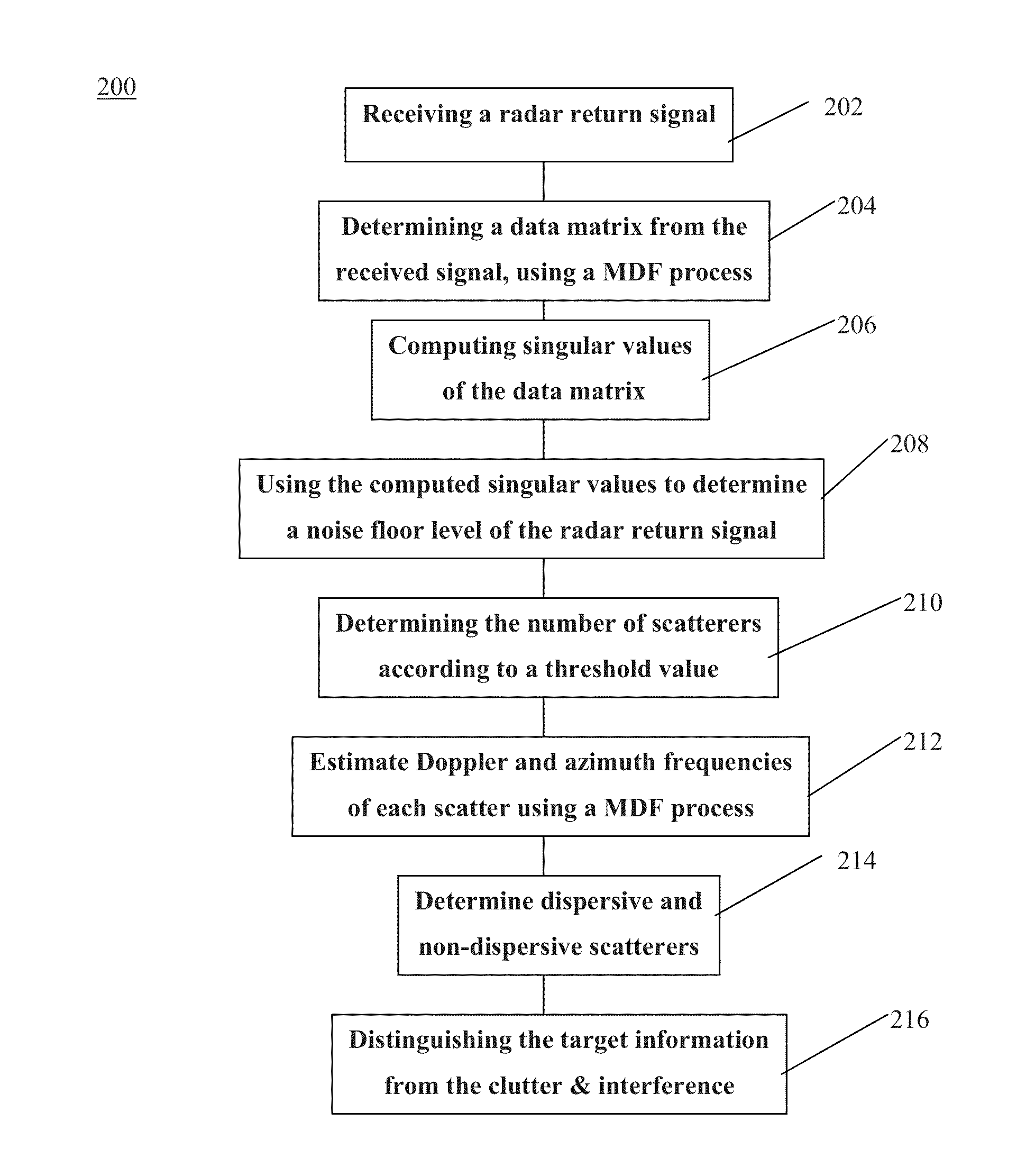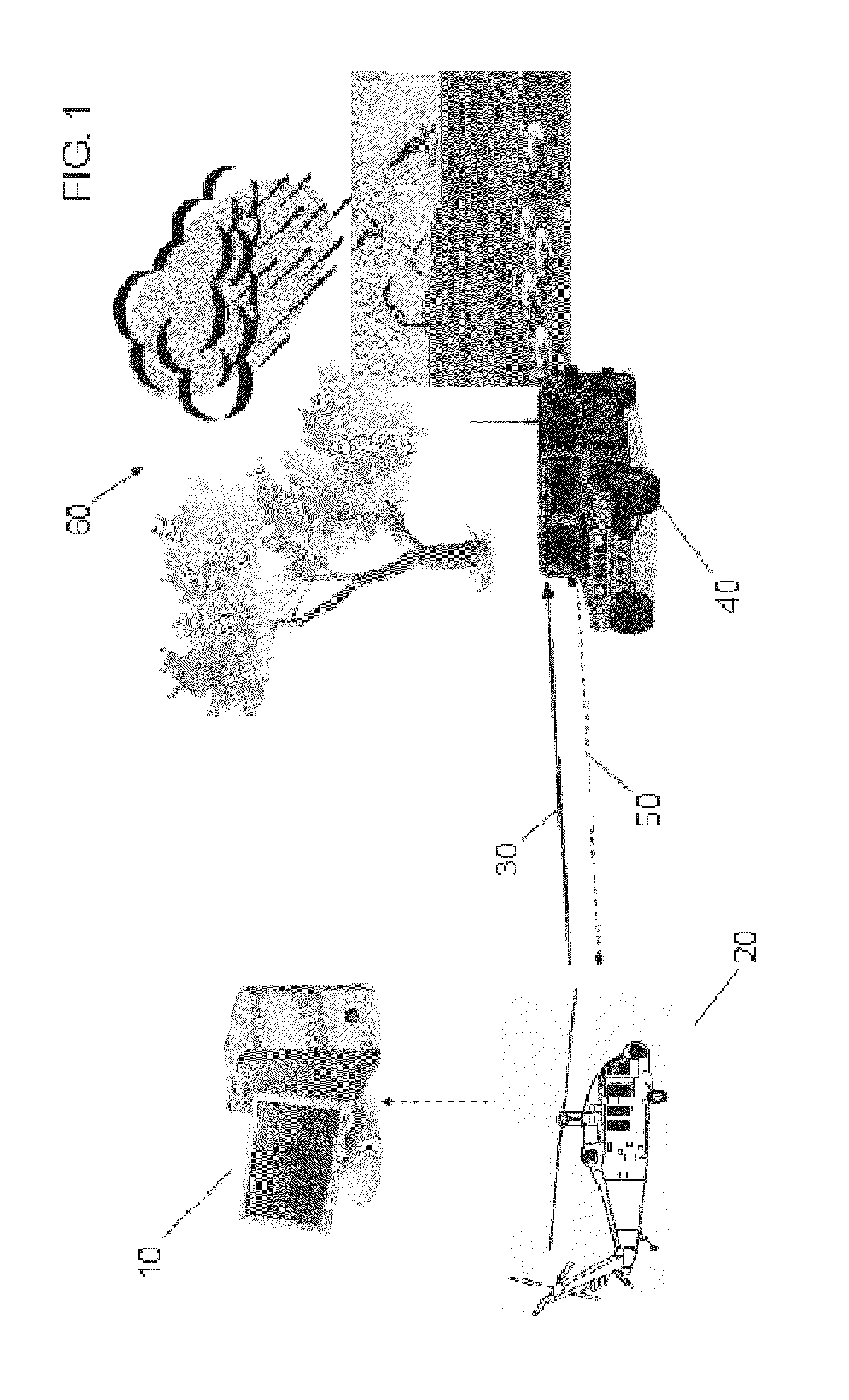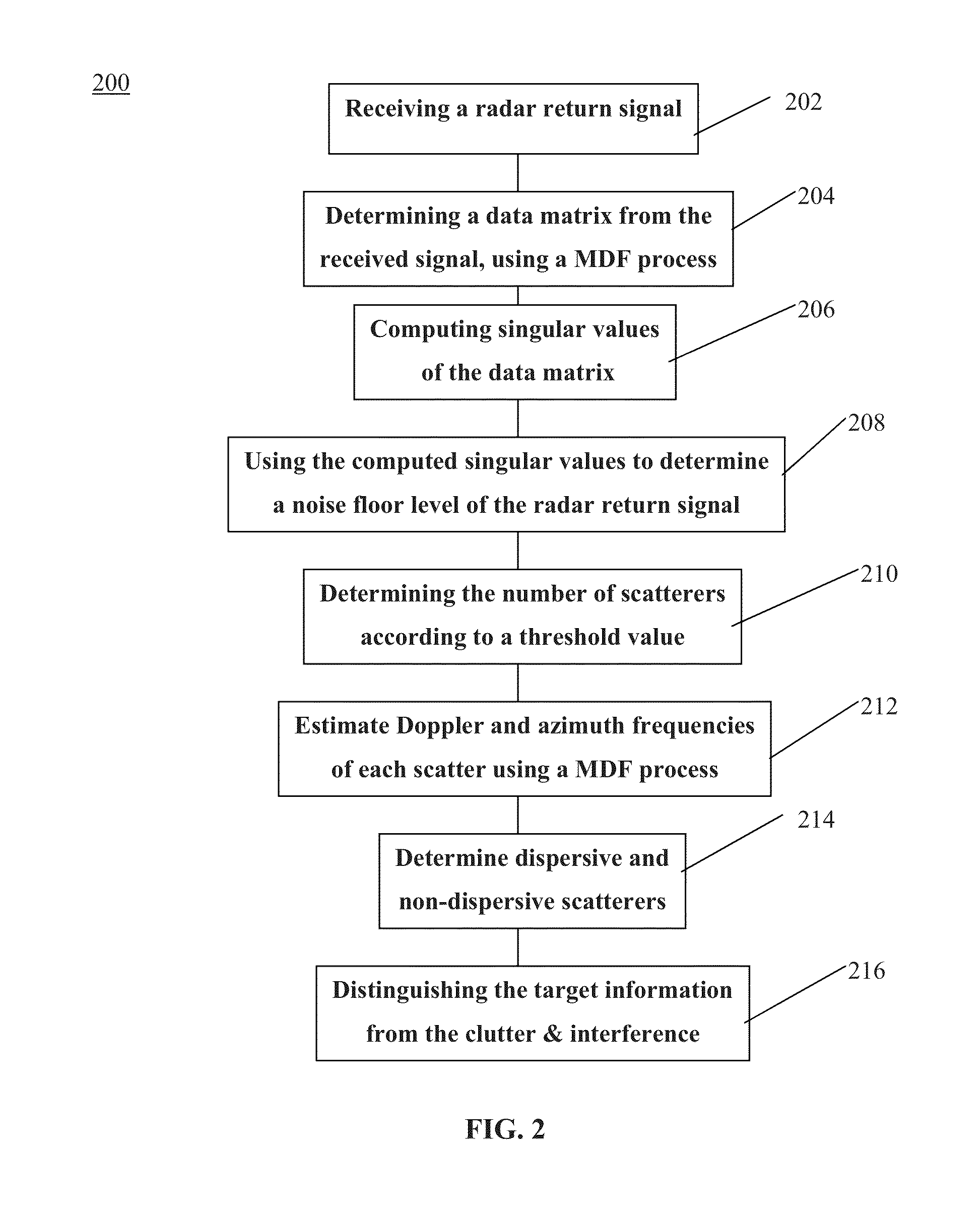Moving target detection using a two-dimensional folding approach
a target detection and multi-dimensional folding technology, applied in the field of moving target detection using a two-dimensional multi-dimensional folding approach, can solve the problems of increasing difficulty in distinguishing the target from the non-stationary clutter radar return signal, exacerbated problems,
- Summary
- Abstract
- Description
- Claims
- Application Information
AI Technical Summary
Benefits of technology
Problems solved by technology
Method used
Image
Examples
Embodiment Construction
[0011]In general, the principle of discriminating between dispersive and non-dispersive signals applies to a wide variety of transmitted radar waveforms, dwell durations, waveform bandwidths, etc. As a non-limiting example, certain monitoring and tracking applications require the detection of dismounts and other slow-moving targets in the presence of various types of clutter while using short dwell durations. The method is also applicable to detecting targets moving at regular speed. Short dwell durations, which can be 25-30 milliseconds (msec), limit resolution because of the short dwell. Longer dwell durations, on the other hand, such as longer than 30 msec, can lead to decorrelation of certain targets like the dismount Doppler returns (which allows separation of different body parts). The relatively short dwell durations can limit comparable Doppler filter resolution in the presence of significant ground clutter to around 0.9 meters per second (m / sec). This can also make it diffi...
PUM
 Login to view more
Login to view more Abstract
Description
Claims
Application Information
 Login to view more
Login to view more - R&D Engineer
- R&D Manager
- IP Professional
- Industry Leading Data Capabilities
- Powerful AI technology
- Patent DNA Extraction
Browse by: Latest US Patents, China's latest patents, Technical Efficacy Thesaurus, Application Domain, Technology Topic.
© 2024 PatSnap. All rights reserved.Legal|Privacy policy|Modern Slavery Act Transparency Statement|Sitemap



